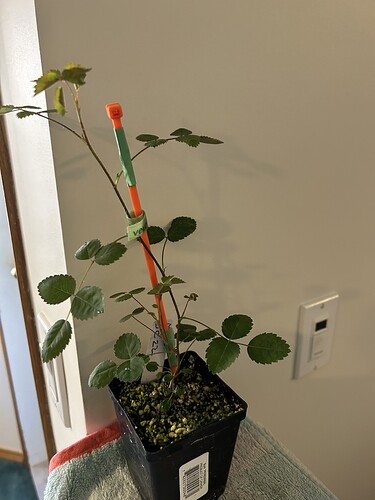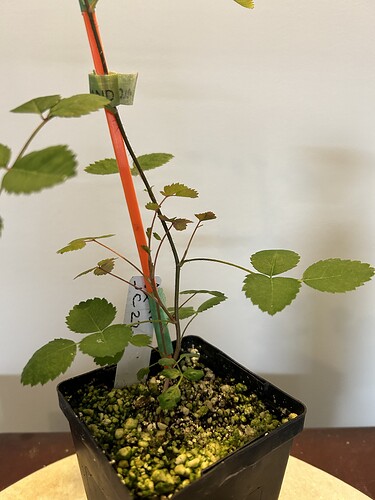Hi Stefan,
Yes you hit it right on the nail and through the 2x4.
Based on my 2022 recon crossing survey results using mass action effect approach (aka random feelings what might work and ~125 crossings) the results say a big slog to come to find the hardy seed parent - w/o resorting to rugosa or warm climate seed parents. Still choked R.kordessi is apparently some morphing derivative of the rugosa of Max Graf. Going rugosa in my garden is inviting anemia in due to calcareous soil.
The hard obvious facts … random not a good enough approach. Didn’t work with high enough success wrt time and effort for the economic technocratic side of maximize the time return.
But got crosses that germinated from a series of hardy pollen parents using the pioneer’s template approach of tender seed parent (gallica) and hardy pollen parent ( e.g. an Explorer, and a rock hardy species and hardy F1 + males).
Only one giant oil slick on golden pound … only one tender female worked … the Finnish Gallica. Logically figures Sisu would make it through the hard bog slog alive. Trust part of my heritage to give non-science existential guidance to pull through w/o a massive mud face flop … :-)).
“Worked” at this stage of the program development only means “germinated” - nothing else matters. Making seed was the first step as per usual and got that with a pass of 50%.
Semi facts against random approach worth - haven’t done detailed postmortem against 2022 table data but of ~ 125 crosses, 50% generated seed, (maybe half dozen tender or tender remontant ones used as seed parent) of those only the cross with the Finn gallica hybrid geminated. Parent flips tried also for prized ones.
The seedlings to-date don’t appear to bare a strong resemblance to the gallica so some real crossing appears to have occurred. But time required to confirm.
From the survey l know l am in trouble for finding a good hardy seed parent … probably the Wrights et al discovered that one long ago. Or figure to get the better bloom form or color it was the best approach to use the superior tender as the seed parent.
I have not found A & B locally. Need to chase it harder - probably in Manitoba. Thats where l convinced a local nursery to get me some Lillian Gibson before Bailey’s plowed the field of them in the US under according to rumour (info from deceased gallica rugosa writer and nursery owner).
Noticed some Scandinavians write they use it but cant recall parentage side (meaning it should be hardier ). Got laxa as l remember so good starting block and large rose - another good attribute l like.
Who knows but l continue to have fun in the hobby.

